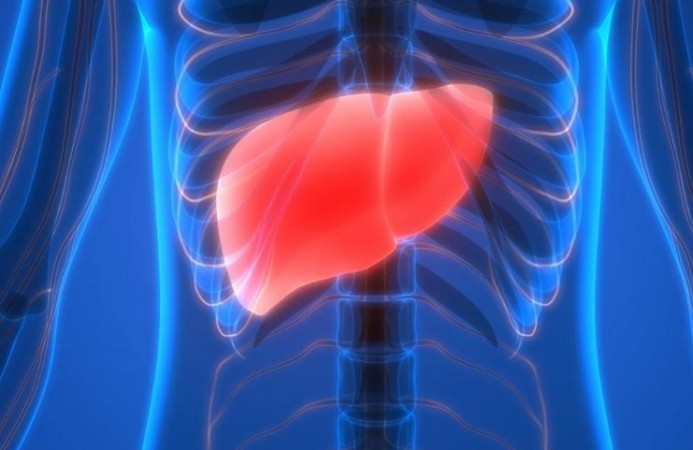
The prevalence of fatty liver disease is a growing concern, particularly in India. This condition, once considered exclusive to adults, is now affecting an alarming number of children. Fatty liver disease, also known as hepatic steatosis, is characterized by the accumulation of fat in liver cells. If left unaddressed, it can lead to serious health complications. In this article, we will delve into the early signs and symptoms of fatty liver disease in children and discuss why it demands immediate attention.
Fatty liver disease has emerged as a significant health concern in India, with an increasing number of children being diagnosed. This once uncommon condition has been closely associated with poor dietary habits, sedentary lifestyles, and rising childhood obesity rates. In this article, we will explore the early signs and symptoms that parents and caregivers need to be vigilant about to ensure timely intervention.
Understanding Fatty Liver Disease in Children
What Causes Fatty Liver Disease?
Fatty liver disease occurs when excess fat accumulates in liver cells. This can be caused by a variety of factors, including poor diet, excessive sugar intake, obesity, and genetic predisposition. In children, the condition often develops as a result of a combination of these factors.
The Link Between Obesity and Fatty Liver Disease
Childhood obesity has become a rampant issue, and it plays a significant role in the development of fatty liver disease. The excess fat in the body gets deposited in the liver, leading to inflammation and potential scarring over time.
Early Signs and Symptoms
Unexplained Fatigue
One of the early indicators of fatty liver disease in children is unexplained fatigue. Children may complain of feeling tired even after adequate rest, affecting their overall quality of life and participation in activities.
Abdominal Discomfort
Abdominal pain or discomfort, particularly in the upper right side, is another red flag. Parents should pay attention to any complaints of persistent pain.
Elevated Liver Enzymes
Routine blood tests may reveal elevated levels of liver enzymes. While these tests alone cannot diagnose fatty liver disease, they can prompt further investigation.
Poor Appetite and Weight Loss
Children with fatty liver disease might exhibit a decrease in appetite and experience unexplained weight loss. These signs should not be ignored, especially if they persist.
Jaundice
Jaundice, characterized by yellowing of the skin and eyes, can indicate advanced stages of fatty liver disease. This symptom warrants immediate medical attention.
The Role of Diet and Lifestyle
Excessive Sugar Consumption
The modern diet's high sugar content, including sugary beverages and processed snacks, contributes significantly to the development of fatty liver disease. Limiting sugar intake is crucial for prevention.
Lack of Physical Activity
A sedentary lifestyle exacerbates the risk of fatty liver disease. Encouraging children to engage in regular physical activity can help maintain a healthy weight and reduce the likelihood of this condition.
Unhealthy Dietary Choices
Diets rich in unhealthy fats and low in essential nutrients play a substantial role in the onset of fatty liver disease. Promoting a balanced diet with plenty of fruits, vegetables, and whole grains is essential.
Diagnosing Fatty Liver Disease
Physical Examination and Medical History
Doctors may conduct a physical examination and review the child's medical history to assess the risk factors and symptoms associated with fatty liver disease.
Blood Tests
Blood tests can provide valuable insights into liver function and the presence of any abnormalities. Elevated liver enzymes can indicate potential liver issues.
Imaging Studies
Imaging techniques such as ultrasound, MRI, and CT scans can help visualize the liver's condition and detect the presence of excess fat.
Preventive Measures
Encouraging a Balanced Diet
Parents and caregivers play a pivotal role in shaping children's eating habits. Providing nutrient-rich meals and minimizing processed foods can significantly lower the risk of fatty liver disease.
Promoting Regular Exercise
Physical activity should be an integral part of a child's routine. Encouraging outdoor play and organized sports can contribute to overall health and well-being.
Raising Awareness in Schools
Educational institutions can also play a role by incorporating health and nutrition education into their curriculum, raising awareness about the importance of a healthy lifestyle.
Seeking Medical Help
Importance of Early Diagnosis
Timely diagnosis is critical in managing fatty liver disease. Early intervention can prevent the progression of the condition and reduce the risk of complications.
Collaborative Approach to Treatment
Medical professionals, nutritionists, and psychologists may collaborate to develop a comprehensive treatment plan tailored to the child's needs.
The Role of Parents and Caregivers
Setting a Healthy Example
Children often learn by example. Parents and caregivers who prioritize a healthy lifestyle can influence children to make better choices.
Monitoring Screen Time
Excessive screen time has been linked to sedentary behavior and poor dietary habits. Setting limits on screen time can contribute to a healthier lifestyle.
Fatty liver disease is a concerning health issue that is increasingly affecting children in India. Recognizing the early signs and symptoms is crucial for timely intervention and effective management. By promoting a balanced diet, regular exercise, and a healthy lifestyle, parents, caregivers, and the community can collectively work towards reducing the prevalence of fatty liver disease among children.
Foods that Contain Almost No Calories: Satisfy Your Cravings without Guilt
7 Superfoods to Strengthen Your Immune System and Fight Tonsillitis